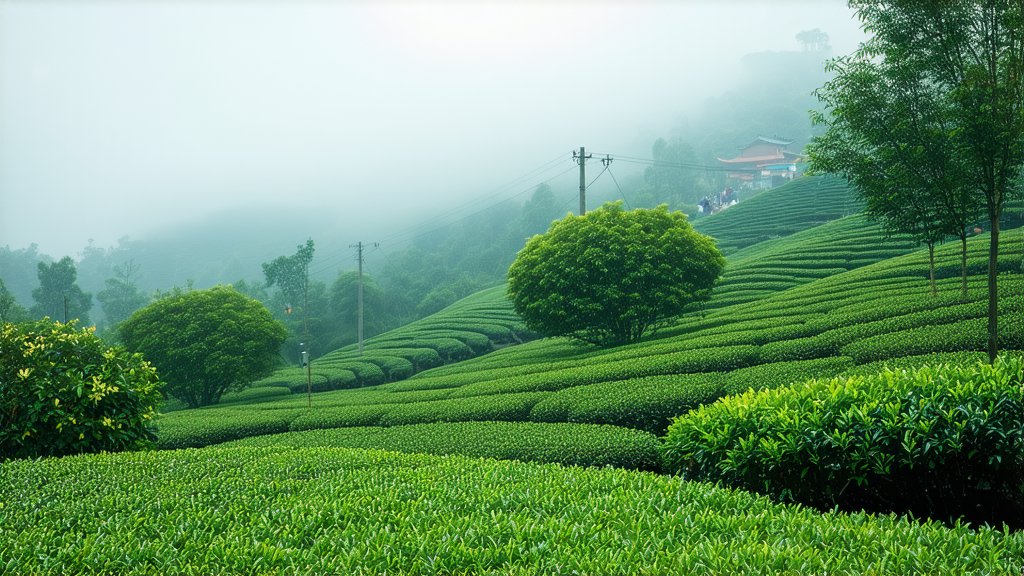
The world of tea is vast and varied, offering an array of flavors, aromas, and experiences that cater to diverse palates and preferences. Among the myriad varieties, one stands out for its complexity, depth, and historical significance - Tieguanyin, a premium variety of Oolong tea hailing from Anxi County in Fujian Province, China. This article embarks on a comprehensive exploration of Tieguanyin, delving into its rich history, distinctive characteristics, intricate production process, and the nuanced art of its appreciation.
Historical Roots and Cultural Significance
Tieguanyin, often referred to as the "Fairy Tea" or "Iron Goddess," traces its origins back to the Ming Dynasty (1368-1644), though it gained prominence during the Qing Dynasty (1644-1912). Its name, which translates to "Iron Buddha," is believed to have been inspired by a statue of the goddess Guanyin found near where the first plants were discovered. The tea quickly became associated with spirituality, health, and longevity, earning a revered place in Chinese culture and tradition. Over centuries, Tieguanyin has not only survived but thrived, becoming a symbol of China's rich tea heritage and a favorite among connoisseurs worldwide.
A Symphony of Flavors: Variety and Characteristics
Tieguanyin is celebrated for its unique flavor profile, which strikes a delicate balance between the freshness of green tea and the richness of black tea. It embodies the essence of Oolong tea, characterized by a medium oxidation level that imparts a distinct aroma and taste. The leaves are typically rolled into tight pellets, revealing a dark green hue upon brewing. When steeped, Tieguanyin unleashes a complex bouquet of floral notes, often reminiscent of orchids, accompanied by subtle fruity undertones and a hint of creamy sweetness. Its flavor profile can vary slightly depending on factors such as the altitude at which it is grown, the specific terroir, and the skill of the tea master.
The Art of Crafting Tieguanyin
The creation of Tieguanyin is an artisanal process that demands precision, expertise, and a deep understanding of nature's rhythms. It all begins with the careful selection of tea leaves from ancient varietals, often grown on mountain slopes at elevations ranging from 600 to 1000 meters above sea level. These high-altitude gardens benefit from cooler temperatures, abundant rainfall, and mist, contributing to the tea's distinctive character.
The harvest typically occurs several times a year, with spring and autumn being the most prized seasons due to the optimal growing conditions. After picking, the leaves undergo a series of meticulous steps: withering under the sun or in shade, shaking to encourage oxidation, turning the edges red while keeping the center green, fixing (heating) to halt oxidation, rolling to shape the leaves into their characteristic pellet form, and finally, drying to remove excess moisture and enhance the tea's fragrance. Each stage requires the tea master's keen senses and experience to ensure the perfect balance is achieved.
The Ritual of Appreciation: Savoring Tieguanyin
To truly appreciate Tieguanyin is to engage in a meditative ritual that transcends mere consumption. The traditional Chinese tea ceremony provides a framework for this experience, emphasizing mindfulness, respect for nature, and the harmony between man and environment. Here's a step-by-step guide to savoring this exceptional tea:
-
Preparation: Begin by selecting a Yixing clay teapot or a clear glass pot to fully appreciate the visual beauty of the leaves unfurling. Warm the pot with hot water before discarding it.
-
Measurement: Use approximately 5 grams of Tieguanyin per 150ml of water. Adjust according to personal preference for stronger or milder flavors.
-
Water Quality: Use freshly drawn, filtered water heated to around 95°C (203°F). Good water quality significantly impacts the tea's taste.
-
Steeping: Place the茶叶into the warmed pot and pour in the hot water gently. The first infusion serves as a rinse to awaken the leaves; discard this water without hesitation.
-
Brewing Time: For subsequent infusions, start with a short steeping time of about 20-30 seconds, gradually increasing it with each brew. Tieguanyin can be steeped multiple times, each revealing new layers of flavor.
-
Observation: As the tea brews, observe the transformation of the tightly rolled pellets into graceful leaves, appreciating their dance within the pot.
-
Aroma: Before taking a sip, inhale deeply to capture the tea's aroma, which should evolve with each infusion, showcasing different facets of its complexity.
-
Tasting: Sip slowly, allowing the tea to coat your palate fully. Notice the initial sweetness, followed by the floral and fruity notes, and finally, the lingering aftertaste that signals a well-crafted Tieguanyin.
-
Reflection: Take a moment to reflect on the sensory journey, appreciating not just the flavors but also the cultural heritage and craftsmanship encapsulated in every cup.
In conclusion, Tieguanyin is more than just a beverage; it is a testament to centuries of tea-making tradition, a bridge connecting past and present, and an invitation to explore the profound depths of Chinese tea culture. Whether you are a seasoned tea enthusiast or a curious newcomer, its intricate flavors and aromas promise a captivating experience that transcends borders and time.